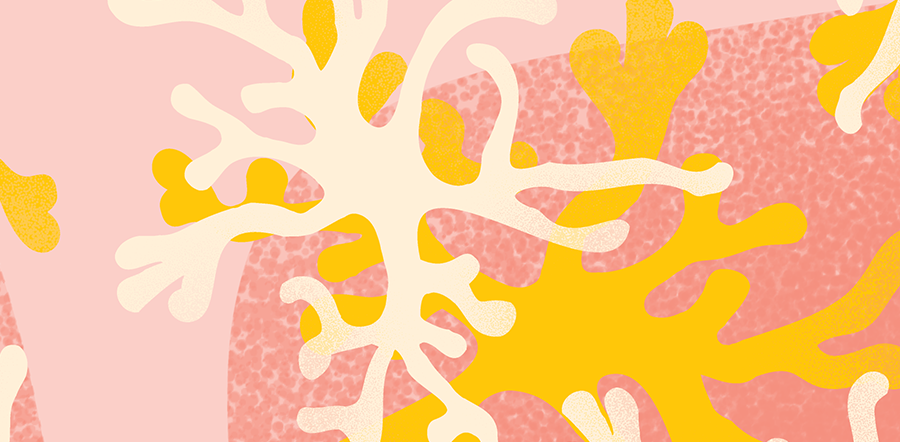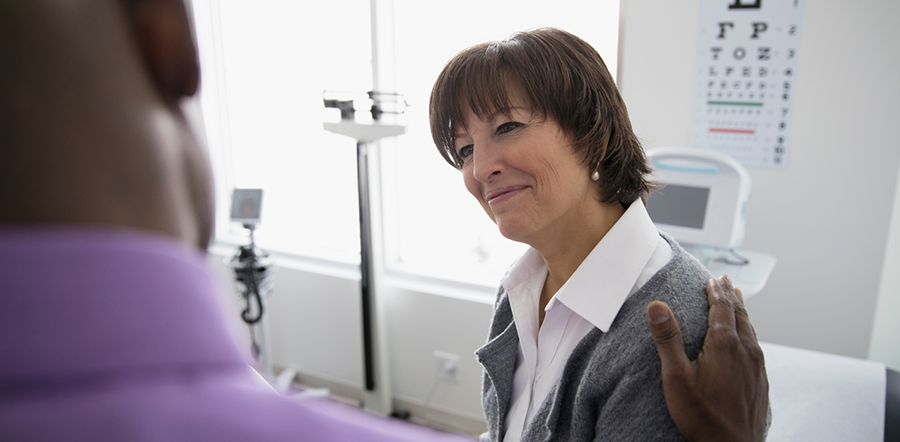
Alzheimer's
Picture a person living with Alzheimer’s disease. Many living with the disease may not be who you’re imagining. Alzheimer’s can look like anyone you know—your neighbor, uncle, co-worker, friend. Many with early-stage Alzheimer’s are still working, enjoying trips and sharing quality time with family. They’re still living independent lives. That’s valuable time to prolong as much as possible.
Living a New Normal
Allan's optimistic spirit remains even after his Alzheimer's diagnosis. He's making the most of his new normal by spending quality time with family doing the activities he loves.
Time is Worth Fighting For
Alzheimer's disease progresses slowly over 10-20 years.1,2 During that time, people can have a spectrum of symptoms, from non-symptomatic (preclinical) Alzheimer’s to severe dementia.3 As the disease progresses, Alzheimer’s impacts day-to-day life more and more. It interferes with a person’s routines, relationships, hobbies and, ultimately, their independence.
The scientific advancements that are emerging, and on the horizon, require a timely, accurate diagnosis. At the first sign of changes in memory or thinking, people should see their doctor for an assessment. If someone is diagnosed too late, that can impact the potential effectiveness of approved treatment options.
You can learn more and sign up to receive updates on memory and thinking issues at morethannormalaging.lilly.com.
00:00-00:04
(Metronome ticks)
00:02
Picture of kitchen cupboard with a "CUPS" label.
00:06
(Kettle hisses) The kettle is taken off the stove.
00:09
A woman puts a jacket on and leaves the house.
00:10
A sign behind the woman says, "CHECK W/ DAVID BEFORE LEAVING."
00:12
A close-up of a journal is shown. The word "remember" is written.
00:13
A view from the passenger seat of a car watches a man driving.
00:14-00:15
A husband says, "Oh my god," as he videos his pregnant wife in the mirror.
00:16
Keys are on a key holder on the wall of the house. One key is labeled “HOUSE KEYS ONLY.”
00:17-00:19
A note is seen on the bathroom mirror. It says, "Cancel Dr appointment Mon." The word “Cancel” has been crossed out, and in different handwriting below is written, "Keep it, Hun. I'll drive you."
00:20-00:21
The woman, as a young child, is seen in old home movie-style footage dancing on the beach in a red-skirted bathing suit.
00:22
In the home, an old swimming trophy is seen on a shelf with other awards.
00:22
There is a close-up of a desk calendar with the date of the 24th shown. The message on the date says, "BOOK CLUB CANCELLED THIS WEEK.” Under “BOOK CLUB” is written, but it has been crossed out.
00:23
Many family photos and children's art projects are seen hung up on the refrigerator.
00:24
A close-up of a journal is shown with the words, "I miss them."
00:25-00:26
A phone is seen ringing. Next to the phone is an envelope that's being used as a notepad. It says, "Try Anjali Again." Under that, three different dates are written and have been crossed out.
00:27
As the phone still rings, a family picture is sitting on a side table in the home.
00:28-00:30
The answering machine is heard: "At the tone, please record your message." A woman is seen in the background getting ready for the day. In the foreground, a note is taped to a clock that says, "You haven't upset anyone."
00:32
The answering machine beeps, and old home movie footage of the pregnant woman shown earlier is playing. She is laughing in a garden.
00:34
A close-up of a journal is shown. Words say, "One day at a time."
00:36
A couple is holding hands. The man is wearing a gold wedding band.
00:38
A woman is seen sitting up in bed abruptly while it is still dark outside.
00:40
A light is turned on and a small handwritten sign can be seen on a table that says, "You are home."
00:41
Husband and wife embrace, and the husband asks, "Honey, are you alright?"
00:42-00:50
A clock begins ticking, and as it continues, moments of the woman's life are shown. There are various scenes of her life as she's growing up, and we see her looking at her journal with the words "You are still you” written.
00:51-00:53
The woman sits on her bed, looking at her journal. The text on the screen reads, "People with Alzheimer's take notes to remember."
00:54-00:56
The woman, as a young child, is again seen dancing on the beach in a red-skirted bathing suit. The text on the screen reads: "30 years of research hasn't forgotten them."
00:57-00:60
As the young child continues dancing on the beach, the text on the screen fades, and the Lilly logo appears: "Lilly, A medicine company."
Don't Forget
Innovation takes decades of persistence, but we’re making progress in Alzheimer’s disease. Watch our latest film.
Scientific Advancements Have Potential to Provide New Hope
People living with Alzheimer’s don’t have time to waste. We’re taking on Alzheimer’s from every angle: advancing the science that could lead to breakthrough therapies; discovering new ways to find timely and accurate diagnoses; and partnering across our industry and beyond to work with more speed.
Through ongoing clinical trials and cutting-edge research, we’re urgently developing potential treatments and tools to help slow disease progression. It’s all with the hope to give people something invaluable: more options that could potentially provide more time.
Better Access, More Possibilities
While we’re not where we want to be—with a cure for Alzheimer’s disease—we’re making significant progress. Science has advanced to provide better diagnostic tools and treatments. But we also need this innovation to reach people living with Alzheimer’s.
That means healthcare providers need to have conversations sooner to better check for signs and symptoms of the disease. People need access to the tools that help accurately diagnose their problems with memory and thinking and the potential causes. And people living with Alzheimer’s and their families need to have appropriate reimbursements for the tools and approved treatments that may provide them more quality time.
It’s crucial for stakeholders—industry, government, healthcare, and advocates—to work together to strengthen our system’s capacity to address these issues.
Additional Resources
1. Centers for Disease Control and Prevention. Alzheimer’s Disease and Related Dementias. Available at: https://www.cdc.gov/aging/aginginfo/alzheimers.htm. Accessed February 13, 2024.
2. Porsteinsson AP, Isaacson RS, Knox S, et al. Diagnosis of early Alzheimer’s disease: clinical practice in 2021. J Prev Alzheimers Dis. 2021;8:371-386.
3. Aisen PS, Cummings J, Jack CR, et al. On the path to 2025: understanding the Alzheimer’s disease continuum. Alz Res Therapy 2017;9(1):60. https://doi.org/10.1186/s13195-017-0283-5
4. Galvin JE, Aisen P, Langbaum JB, et al. Early stages of Alzheimer’s disease: evolving the care team for optimal patient management. Front Neurol. 2021;11:592302.


